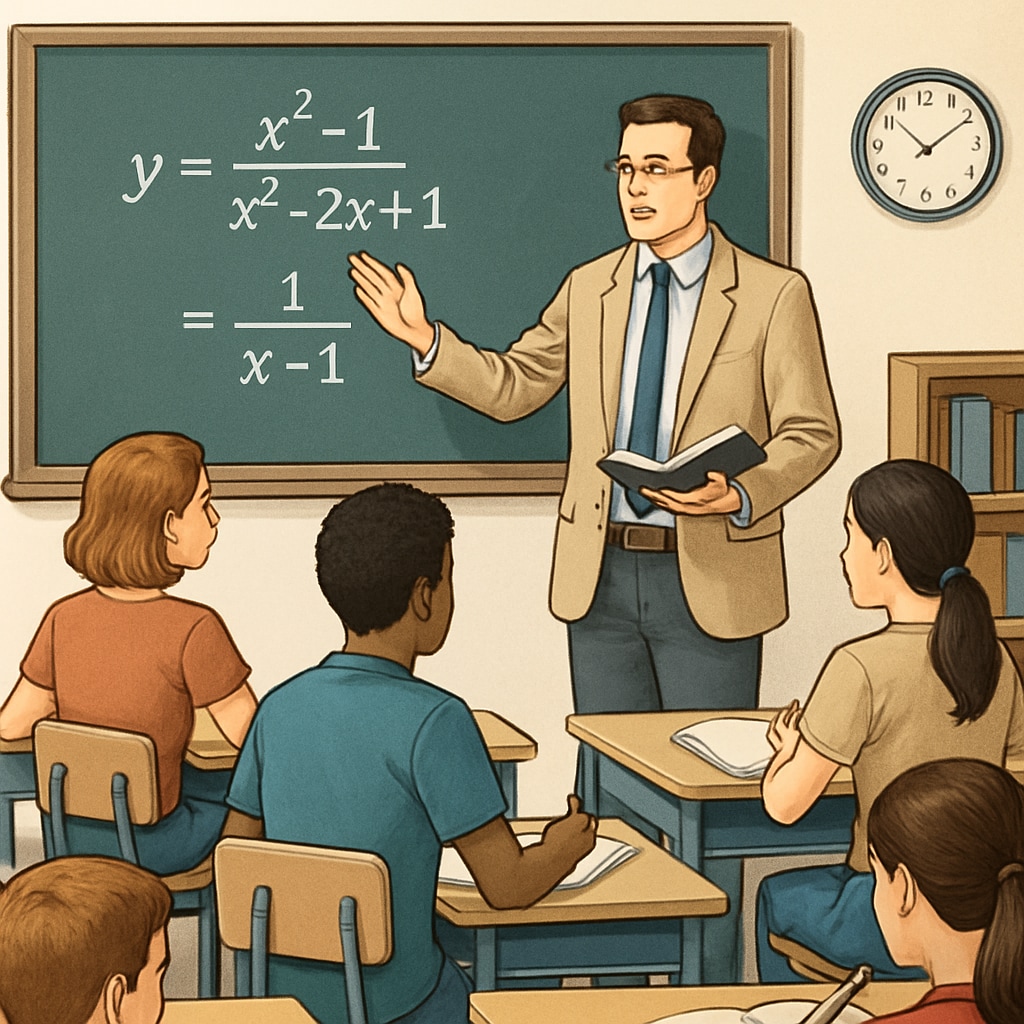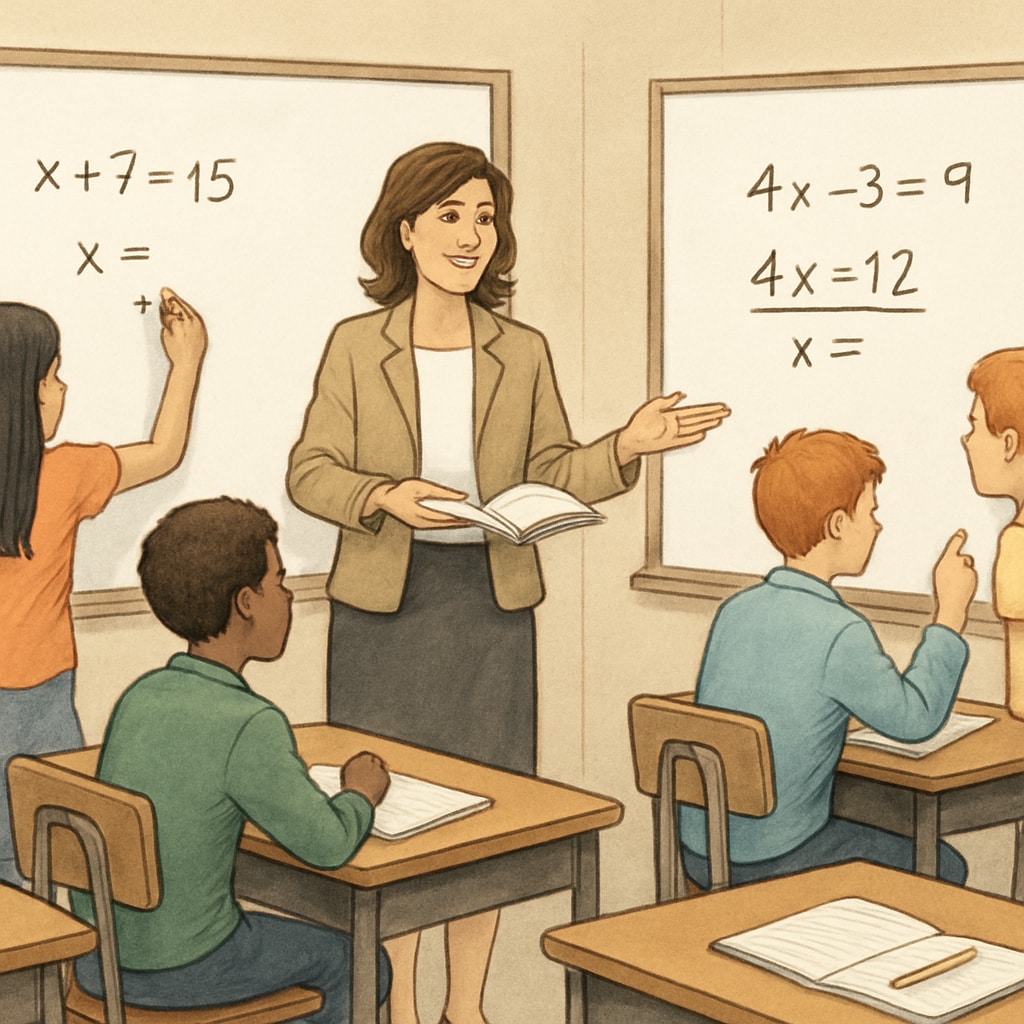High school math teaching, especially in the final year, presents unique challenges for educators and students alike. Curriculum difficulties and learning barriers often hinder academic progress, making it crucial to analyze these issues and adopt effective strategies. This article examines common obstacles students face, based on Algeria’s official curriculum guidelines, and proposes simplified teaching methods in Arabic to enhance student understanding.
Common Challenges in High School Math
High school students frequently struggle with advanced mathematical concepts introduced in their final year. These include calculus, trigonometric applications, and complex algebraic equations. For example, calculus requires a deep understanding of limits and derivatives, which are often abstract and challenging for students to grasp. Additionally, applying trigonometric identities in real-world problems can be intimidating without proper foundational knowledge.
Language barriers also play a significant role in complicating math education. In Algeria, many students are taught math in Arabic, which may lack technical terms or direct translations for complex concepts typically expressed in other languages like French or English. As a result, students may experience additional cognitive load when trying to decode mathematical terminology.

Optimizing Teaching Strategies for Better Learning
To address these challenges, educators must focus on simplifying the curriculum and making it more accessible. Here are some key strategies:
- Utilizing Visual Aids: Graphs, diagrams, and animations can make abstract concepts more tangible. For example, visualizing the slope of a tangent line can clarify the concept of derivatives in calculus.
- Incorporating Real-World Applications: Demonstrating how trigonometry and calculus are used in engineering or physics can motivate students and make the content more relevant.
- Language Simplification: Translating complex mathematical terms into straightforward Arabic expressions can help reduce cognitive barriers for students.
- Interactive Learning: Group activities and problem-solving workshops encourage collaboration and critical thinking, making learning more engaging.
Furthermore, teachers can adopt a step-by-step approach to break down advanced topics into manageable segments. This method ensures students fully comprehend each component before progressing to the next level.

Conclusion: Bridging the Final Year Gap in Math Education
Overcoming high school math challenges requires a blend of curriculum analysis and innovative teaching strategies. By addressing common barriers such as abstract concepts and language difficulties, educators can create an environment where students feel confident and prepared to tackle advanced mathematical topics. The proposed Arabic teaching framework offers a practical solution, ensuring students in Algeria—and potentially other regions—achieve greater success in their academic journey.
For further reading on mathematical concepts and their applications, visit Calculus on Wikipedia or Trigonometry on Britannica.
Readability guidance: Short paragraphs and bullet points summarize key ideas. Overuse of passive voice is avoided, and transitional words are used to maintain flow. Images effectively support the content’s context.


